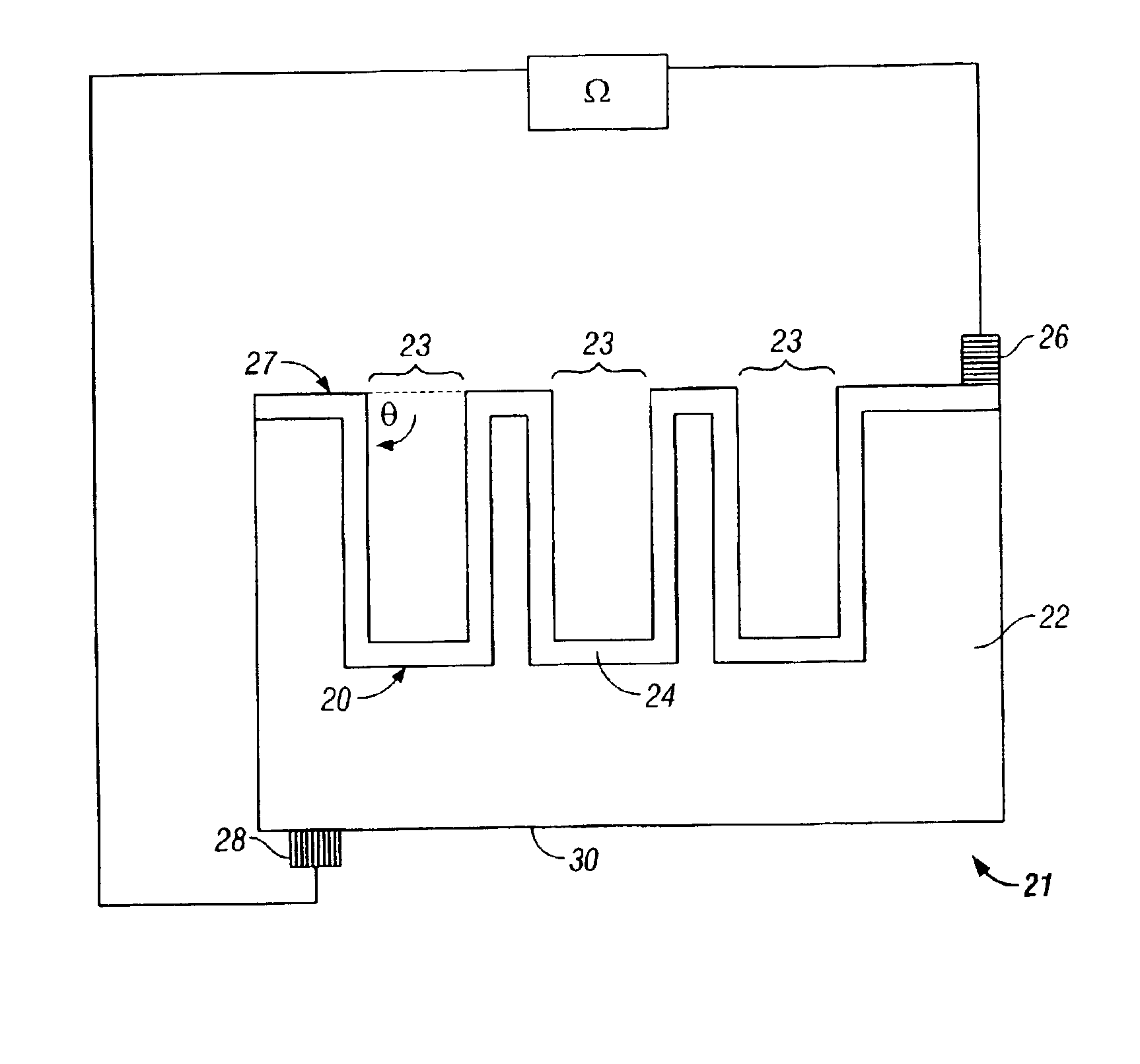Apparatus and method for generating electrical current from the nuclear decay process of a radioactive material
a nuclear decay and apparatus technology, applied in the direction of electric generator control, instruments, nuclear engineering, etc., can solve the problems of inability to achieve much greater than ten percent energy conversion rate, inability to stabilize and continue to decay, and inefficiency of the energy conversion process
- Summary
- Abstract
- Description
- Claims
- Application Information
AI Technical Summary
Benefits of technology
Problems solved by technology
Method used
Image
Examples
Embodiment Construction
[0020]Referring now to FIG. 2A, an example embodiment is seen in which a silicon wafer 21 has been doped to provide a p-type region 22, an n-type region 24 and a junction region 20. Contact 28 connects p-type region 22 to a first side of a load Ω via a low-resistivity contact region 30 (e.g., a metal, for example, aluminum). A second low-resistivity contact surface region disposed between contact surface region 27 and contact 26 (e.g., a metal deposit, for example, gold) permits a current transport means for charges liberated by energetic decay electron energy absorption in n-type region 24 to reach contact 26 such that n-type region 24 is in electrical communication with another side of load Ω. Tritium gas (not shown), which is disposed in deep pores 23, decays. Each decay event generates an energetic beta particle (not shown) that enters n-type region 24, where an electric field exists relative to junction region 20 and contact surface region 27 caused by the contact potential bet...
PUM
 Login to View More
Login to View More Abstract
Description
Claims
Application Information
 Login to View More
Login to View More - R&D
- Intellectual Property
- Life Sciences
- Materials
- Tech Scout
- Unparalleled Data Quality
- Higher Quality Content
- 60% Fewer Hallucinations
Browse by: Latest US Patents, China's latest patents, Technical Efficacy Thesaurus, Application Domain, Technology Topic, Popular Technical Reports.
© 2025 PatSnap. All rights reserved.Legal|Privacy policy|Modern Slavery Act Transparency Statement|Sitemap|About US| Contact US: help@patsnap.com



